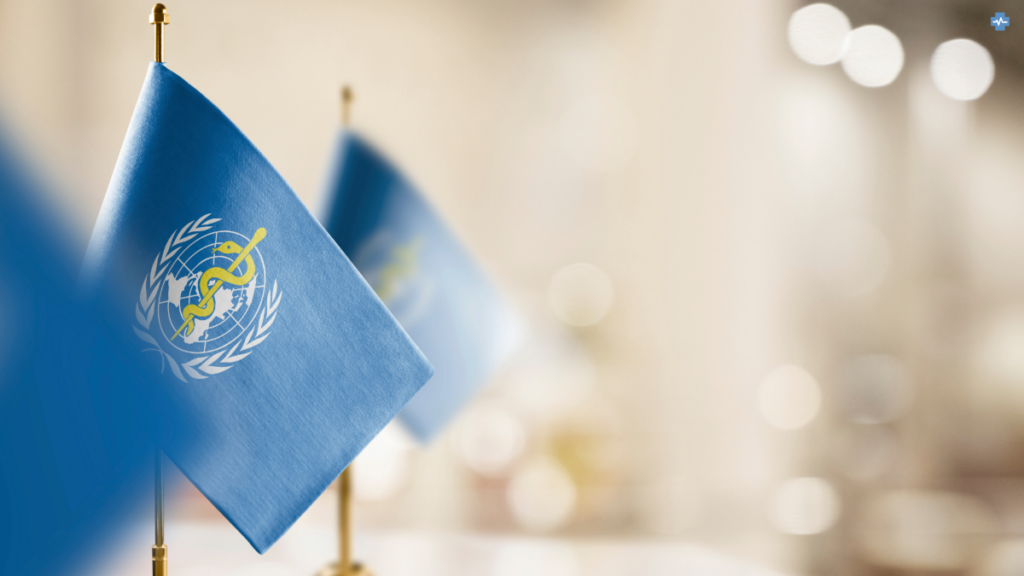The COVID-19 pandemic brought to light many problems with global health systems. Perhaps too many. Especially when faced with a fast-spreading virus. It also brought renewed awareness to another formidable threat, Antimicrobial Resistance (AMR). Nothing new here of course. Resistance to drugs such as antibiotics has been discussed and highlighted since the late 70s. So why has been the World Health Organization (WHO) raising alarms about the global implications of AMR and the risks associated with other emerging infectious diseases?
The concern is pretty clear. AMR and infectious diseases like tuberculosis (TB) and mpox are spreading rapidly, largely due to limited treatment options and poor infection control in high-risk regions. “The fact that TB still kills and sickens so many people is an outrage,” says WHO Director-General Dr Tedros Adhanom Ghebreyesus, “when we have the tools to prevent, detect and treat it.”
A drug resistance problem usually develops when bacteria, viruses, fungi and parasites adapt to resist medicines aimed at their elimination. This is making the treatment of infection much more difficult. This is not a new problem but has grown into an unprecedented global scale where millions of people die each year from drug-resistant infections.
One major concern about AMR is the causative agent of tuberculosis, Mycolacterium tuberculosis, which is developing resistance against rifampicin, considered the primary medicine against TB. These superbugs result in prolonged illnesses, increase health expenditure costs and raise international mortality rates. The WHO estimates that if left unaddressed, AMR will cost the global economy roughly £75 trillion by 2050. That is a very large amount indeed.
The WHO has identified some of the priority pathogens that have become resistant to critical antibiotics. This includes gram-negative bacteria such as specific strains of Enterobacterales, which show resistance to last-resort antibiotics. Infections caused by these pathogens require stronger and often more toxic medications, heightening the risk of adverse effects for patients.
AMR has transformed otherwise treatable infections into serious threats, especially in low- and middle-income countries (LMICs) where access to effective drugs is limited. It not only prolongs hospital stays but also places a severe economic strain on healthcare systems. In fact, AMR-related healthcare costs in LMICs are estimated to double over the next decade without intervention.
Addressing AMR requires a One Health approach-a method of collaboration among human, animal and environmental health sectors. Misuse and overuse of antibiotics in agriculture, medicine and aquaculture add to the problem. Dr. Tereza Kasaeva, Director of WHO’s Global Tuberculosis Programme, says, “The crisis is multifold, from the very low levels of funding to the challenges such as conflicts and migrations, which are the contributing factors towards the spread of resistant infections. We have to unite across all the sectors and stakeholders to fight these battles.”
Most Prevalent Infectious Diseases

| Disease | Transmission | Symptoms | Prevention |
|---|---|---|---|
| Influenza (Flu) | Airborne droplets | Fever, cough, sore throat, muscle aches, fatigue | Vaccination, hand hygiene |
| Tuberculosis (TB) | Airborne droplets | Cough, fever, night sweats, weight loss | Vaccination, early diagnosis, treatment |
| HIV/AIDS | Bodily fluids (blood, semen, vaginal fluids, breast milk) | Flu-like symptoms, opportunistic infections | Safe sex practices, HIV testing |
| Hepatitis B and C | Blood and bodily fluids | Liver inflammation, jaundice, fatigue, abdominal pain | Vaccination (Hepatitis B), safe sex practices, avoiding needle sharing |
| Measles | Airborne droplets | Fever, rash, cough, runny nose, conjunctivitis | Vaccination |
| Mumps | Saliva | Fever, swollen glands, muscle aches, headache | Vaccination |
| Rubella (German Measles) | Airborne droplets | Rash, fever, swollen lymph nodes, joint pain | Vaccination |
| Chlamydia | Sexual contact | Often asymptomatic, may cause pain during urination, abnormal discharge | Regular STI testing, condom use |
| Gonorrhea | Sexual contact | Painful urination, abnormal discharge, pain during sex | Regular STI testing, condom use |
Tuberculosis remains the world’s leading infectious disease killer, with WHO reporting a record 8.2 million new cases in 2023. An increase from 7.5 million in 2022. Although TB-related deaths decreased slightly, this rise in cases highlights ongoing concerns about drug-resistant strains. The gap between estimated and reported TB cases narrowed post-COVID, thanks to extensive national and global recovery efforts, yet multidrug-resistant TB (MDR-TB) continues to challenge healthcare systems, especially in India, Indonesia, China, the Philippines and Pakistan. This is where over half of TB cases originate.
Beyond TB, many other infections, like Mycoplasma pneumoniae, are developing resistance patterns that may portend new public health threats. In 2024, for the first time ever, WHO deployed the Global Health Emergency Corps, GHEC, to respond to the outbreaks of mpox across many African countries. This force marshals resources from various health agencies in the infected regions to improve infection control and contact tracing and vaccination, with special attention to countries like the Democratic Republic of the Congo and Burundi.
Global Health Emergency & WHO’s Response

WHO’s heightened response reflects the dire need for robust action against both AMR and infectious diseases. The organisation’s recent Global Tuberculosis Report emphasises the necessity of sustained efforts in areas of prevention, diagnosis and treatment to curb the TB epidemic. Dr Mike Ryan, Executive Director of WHO’s Health Emergencies Programme, adds, “Our ability to contain infections like mpox depends on the collective strength and readiness of health systems, both local and global.” This points to a broader requirement for strong surveillance and rapid response teams to manage infectious disease outbreaks before they spiral into pandemics.
International collaboration is no longer a choice but a given. The United States remains the largest single bilateral donor to TB control, but even this has proved inadequate to bridge the funding gaps. In 2023, only £5.7 billion of the targeted £18 billion annual funding for TB was achieved, leaving very limited healthcare access in the most vulnerable countries. WHO’s latest support framework is the mobilization of experts through Global Health Emergency Corps for rapid responses against disease outbreaks, management of infection control and border diagnostic capacity enhancement.
New antibiotics and other treatments developed through R&D are urgently needed to tackle AMR. But global funding for research in TB and AMR remains very low. Only 20% of the annual target of £4 billion was met in 2022. Why? This funding gap impacts the ability to develop new treatments, vaccines and diagnostics-particularly for diseases such as TB. A disease with complex resistance patterns.
Social and economic factors impact both TB and AMR epidemics. Almost always. TB cases are fuelled by factors such as undernutrition, HIV, diabetes and alcohol use. Poverty and GDP per capita are significant factors. half of TB-affected households in LMICs face catastrophic health costs that exceed 20% of their income, worsening health inequities. AMR similarly affects vulnerable populations disproportionately, especially where healthcare resources and drug access are limited.
Future Strategies
In this regard, targeted funding, policy frameworks, and international cooperation are urgently needed to handle AMR, along with other infectious diseases. The WHO calls upon governments to commit to financing antibiotic stewardship, AMR research, and infection prevention measures, among the commitments of the 2023 UN High-Level Meeting on TB. Scale-up programs such as GHEC would greatly improve pandemic preparedness through timely responses when new infectious diseases emerge.
Future strategies must encompass the One Health approach, linking human, animal and environmental health to prevent antimicrobial misuse. As Dr Tedros Adhanom Ghebreyesus reiterates, “WHO urges all countries to honour their commitments to end TB and reduce AMR.” Ensuring adequate funding, fostering innovation and building resilience within global health systems are essential to addressing these dual threats. A unified approach to health preparedness can be strengthened by continuous research and international collaboration. That offers the best path forward in controlling the world’s deadliest infections.

